The Apollo is Emazing Bike’s 29er hardtail electric trail model. The 93h3h name stands for 9 speed, 350 watt motor, hybrid, 36 volt battery, Hi-Tec battery build and this is really their only off-road oriented design. Most of the other electric bikes come with fenders and hybrid tires… so the hybrid naming convention threw me at first, I would have expected 93m3h for mountain or maybe 93t3h for trail, but no matter. It’s easy to criticize this product for being weak and having a small battery pack but for someone like me, who doesn’t weigh a lot and prefers to pedal and feel active, it’s a special and very satisfying e-bike. Emazing Bike has been around since 2011, based in Northern California, and has a special relationship with frame manufacturers in Asia from what I understand. It’s unique to see a value priced electric bike being sold through dealers that’s available in three frame sizes. All three can feel a little large because of the wide-diameter 29″ wheels and high-step diamond frame, but you get strength and stiffness from the frame and a smoother ride thanks to the lower attack angle and higher air volume. These 29″ tires are perfect for cross country riding and can go over small and medium sized obstacles vs. maneuvering around them like 26″ wheels. They weigh slightly more and aren’t as quick but the frame still feels nimble because the wheels aren’t spaced far apart, if this were a mid-drive powered electric bike, the rear wheel might have to be extended further back to fit properly and this can make it feel less snappy.
Driving the bike is an efficient, relatively quiet, Taiwan Hodaka planetary geared hub motor. It’s lightweight and compact, spoked into the rear wheel with black spokes that match the black rims and other black paint of the frame and accessories. It nearly disappears between the nine-speed cassette and large 180 mm disc brake rotor. As demonstrated on camera, this hub motor is smooth and satisfying in pedal assist mode because the bike utilizes two sensors, a torque and cadence sensor. It responds naturally and feels great to ride with five levels of assist… but it’s not so satisfying in throttle mode. to use the throttle, arrow up to level five and then pedal for a moment while twisting the half-grip throttle on the right. You have to pedal in order for it to become active which is disappointing to me, compared with other throttle operated electric bikes that can be activated at anytime, even standstill. The scenario I’m thinking of is when you’ve come to a stop (at a traffic signal or stop sign) and want to get going again without shifting through gears. It would be nice if the throttle just worked, but instead you have to pedal a bit. Even when the bike is coasting at speed, the throttle won’t activate until you’ve moved the cranks a half turn or so. The fact that this trail bike is using a twist throttle vs. a trigger is also a point of consideration, if you’re actually riding on bumpy terrain, twist throttles are more likely to be accidentally activated vs. triggers that won’t compromise your grip.
Powering the bike is small canister style battery that mounts on top of the downtube. I was told that it’s packed by Hi-Tec and contains premium Panasonic Lithium-ion cells. The capacity is below average at 36 volt 8.7 amp hours vs. 10+ amp hours on many other 36 volt systems. Today, you can choose from many 48 volt systems, so the technology feels a bit dated and begs the question of price. If this ebike were priced closer to $1,500 it might sell better but wouldn’t leave room for sales or dealer margin. In practice, I have seen it marked a bit under the $2k MSRP and I think that makes sense. Remember, they have to make three frame sizes which justifies the higher price point as well. Anyway, the battery pack doesn’t look as streamlined as some of the newer angled or semi-integrated designs from bigger companies, but at least it matches the black color scheme of the bike. It positions weight low and center on the frame and can be charged on or off the bike, but unfortunately that requires a special dongle adapter which could be set down and misplaced easily. There’s room for improvement here, but it definitely gets the job done and if you take the 4.5 lb battery off of the frame, there’s plenty of room for lifting and hanging it on a car or bus rack. There was not however, room to squeeze a bottle cage mount onto the seat tube, so consider adding a rear rack and trunk bag or panniers. You could also get a saddle adapter like this to mount a water bottle behind your seat.
Operating the bike is straightforward, the display panel and button pad are mounted near the left grip and are easy enough to reach and view while riding. Hold the Mode button for a couple of seconds and use the up and down arrows to change assist power. Press Mode again, once on, to cycle through some different readouts and hold up and mode to turn on backlighting. The display panel is a monochrome plastic design from King Meter that is not removable and that can lead to increased wear and scratching (especially at bike racks). It gets the job done but isn’t as precise or accurate as many higher-end systems. Case in point, it only shows four battery capacity ticks vs. five, ten or a percentage readout. This means you have to guess whether one tick means 0% or 25% full which is a huge difference. Also, when you use the twist throttle, the battery indicator drops from four ticks to just one because it’s measuring voltage and voltage sags when output is high. Even the speedometer readout felt a little slow and off at times. These are systems that are good enough, they offer a lot more than just a three-LED power indicator like the early-day ebikes, but they aren’t nearly as precise or accurate as the latest and greatest.
At the end of the day, there are meany ways in which this electric bicycle could be improved, but that doesn’t mean it isn’t enjoyable. To me, the quirky throttle, basic display, and smaller battery pack are worth trading for light weight, nimble handling (for a 29er), and smooth quiet pedal assist. There just aren’t that many products that compete in this space. I met with the founders of Emazing Bike and they were excited to share how efficient the product is, how smart pedal assist is, and yet they also knew it was less powerful than the competition. If you want power, there are plenty of companies doing that, and maybe Emazing will move in that direction someday? But if you appreciate a more bicycle-like feel, then this is one of the few that exist right now. I appreciate the powerful hydraulic disc brakes but noticed that they did not have motor inhibitors to cut power quickly (probably fine given how responsive the torque sensor is and how weak the motor is), I love the rear-mounted kickstand (but heard it jittering when I rode through grass and a section of trail), I like that they chose a thicker 31.6 mm seat post vs. 27.2 mm and would probably swap it out with a suspension post for even more comfort. I would add a disc-compatible rack and maybe some lights for weekday use and then cut across trails and do a bit of mountain biking on the weekend. There’s a lot here to appreciate and it was neat to see this model back to back with some of the other Emazing Bikes at ELV Motors in Santa Clara, CA. Big thanks to Emazing Bike for partnering with me on this post and providing some background on their systems in person.
Pros:
- One of the lightest full-sized electric bikes I have reviewed, at just 43 lbs for the medium sized frame, you can lift it and handle it much easier
- Emazing Bike has been around since 2011 and they work closely with a frame manufacturer so their bikes really stand alone in the space as being unique, the Apollo comes in three frame sizes for improved fit
- The Apollo has a neoprene slap guard, plastic bash guard and chain guide on the chainring (I’m used to seeing thick guards like this on BMX bikes, it protects the chainring teeth if you hit a log or large rock), a rear-mount kickstand that stays out of the way, and matching black spokes
- I really like the way most Emazing Bikes respond in pedal assist mode, they use a torque sensor and a cadence sensor so it’s smooth and predictable but still not as expensive as the fancier mid-drive systems which measure torque, cadence, and wheel speed
- At first glance, the Apollo and other Emazing Bikes almost look like they were created with aftermarket kits (a tube battery and hub motor) but when you look closer, you can see internally routed cables and a custom controller at the base of the downtube
- You get a nine-speed Shimano Acera drivetrain with a wider range for easier climbing and trail riding, many of the other Emazing bikes have a seven speed derailleur with lower-end component group
- The suspension fork offers several adjustments (compression/lockout, rebound, and preload), it should perform well on actual trails vs. some cheaper forks that cannot be dialed in, I like that it matches the black frame and that the front wheel has quick release for easier maintenance and storage of the frame if you’ve got limited space, like in the trunk of a car
- The high-volume 29er tires and 100 mm suspension fork offer a lot of comfort, but you could replace the seat post with a suspension post like this to reduce back, neck, and shoulder fatigue even further, the 31.6 mm diameter is stronger and more trail-worthy so that was a good call by Emazing Bike in my opinion
- Large, 180 mm hydraulic disc brakes provide excellent stopping power and are easier to actuate than mechanical brakes in my experience, the Tektro levers offer adjustable reach so you can fit your hand size or accommodate gloved hands
- The 29″ wheels create a smooth ride where you can go over cracks and small objects vs. going around them, because the frame isn’t built around a mid-motor, the wheels are closer together and the handling is more nimble, the larger wheel diameter elevates the frame so this would be a good one for tall riders (especially with the large frame size option)
- some of the closeup shots in the video make the motor sound loud but in practice, when you’re sitting way up high, it seemed pretty quiet which is nice
Cons:
- The battery blends in with the black paint job nicely but it isn’t especially well integrated or hidden, it also doesn’t offer a high capacity at just 36 volts 8.7 amp hours vs. most others I see offering 36 volts 10 amp hours
- Because of how the battery is connected to the bike, mounted on top of the downtube, they didn’t have room to place bottle cage bosses on the seat tube, consider adding a disc brake compatible rack like this and using a trunk bag with a bottle holster like this
- Because this e-bike uses a rear-mounted hub motor, there’s a power cable sticking out from the left side that could get bent or snagged in the event of a tip or crash, just be careful with this cable, at least it’s pretty well protected by the kickstand which is positioned just in front of it… just don’t kick the cable as you deploy or stow the stand
- It’s great that you can charge the battery on or off the bike but I wish you didn’t need a special dongle adapter to do so, the charging port is a small circle when the battery is mounted but requires this adapter cup thing that fits into the base of the pack when it’s off the bike, there’s no leash on the adapter so maybe zip tie it to your charger so that you don’t accidentally misplace it
- The display panel isn’t as sophisticated, you only get a four bar battery charge level indicator and it can surge as you ride the bike (like if you activate the throttle at full power, the battery readout dips even though there is still a lot of capacity being stored)
- The display panel is not removable which means it can take more abuse at the bike rack and more weather wear (sun, rain, etc.), the Apollo I tested had a scratched display probably just from being parked next to other bikes with metal brake levers
- On the one hand, I love that this bike has a twist throttle (though a trigger might be easier to use off-road, not compromising your grip) but I dislike that you have to pedal a a half-turn to activate it, you can’t just throttle from standstill and it won’t even work if the bike is moving like most other systems, you actually have to turn the pedals for a moment
- This isn’t really a con, but I wanted to explain that with a larger wheel diameter and efficient smaller 350 watt hub motor, you shouldn’t expect to climb big hills without pedaling, this setup is lightweight but less powerful
Resources:
- Official Site: https://www.emazingbike.com/collections/ourebike/products/apollo93h3
- More Pictures: https://goo.gl/photos/6FzUmbb1vvA2dMJk7

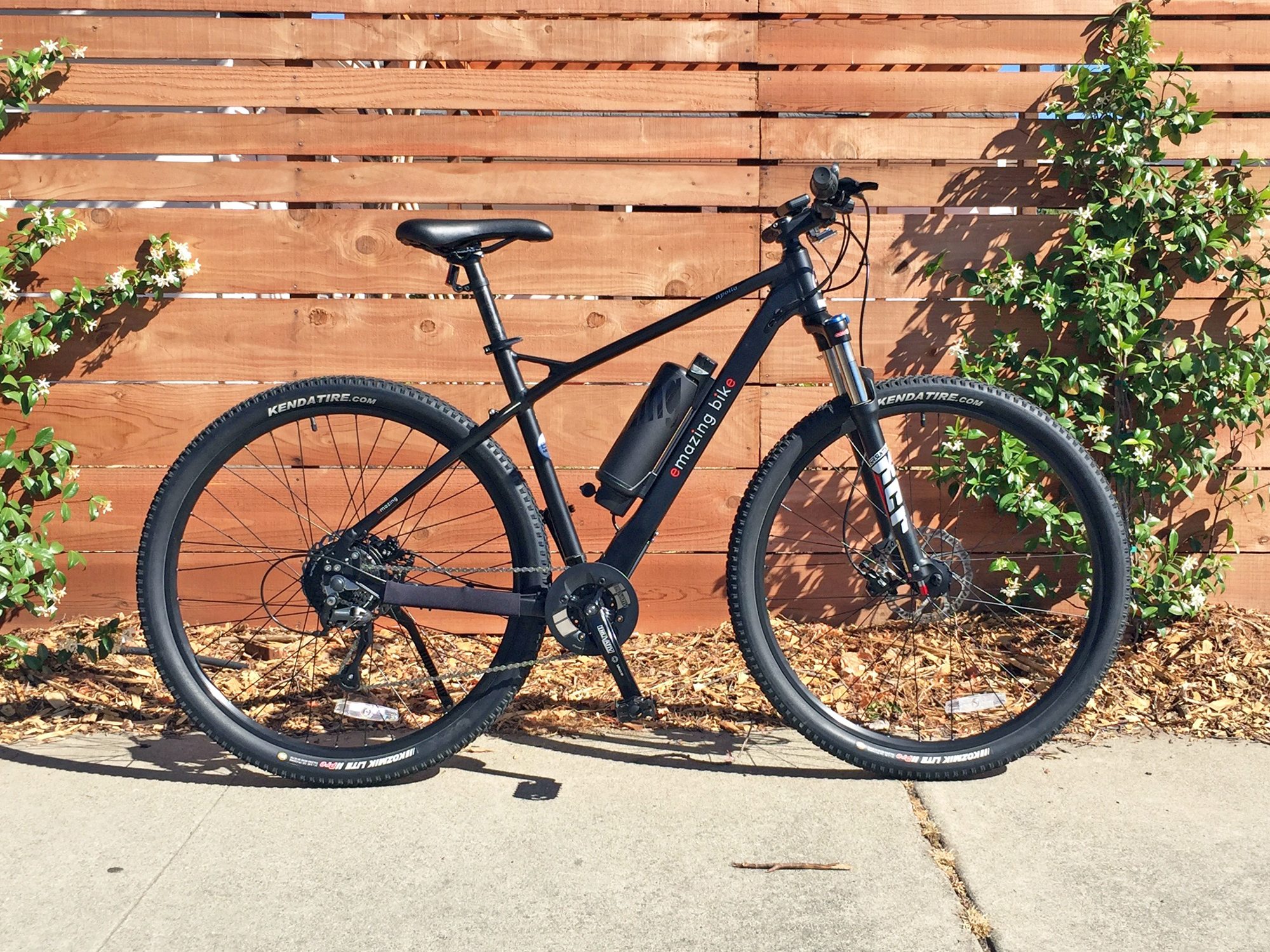
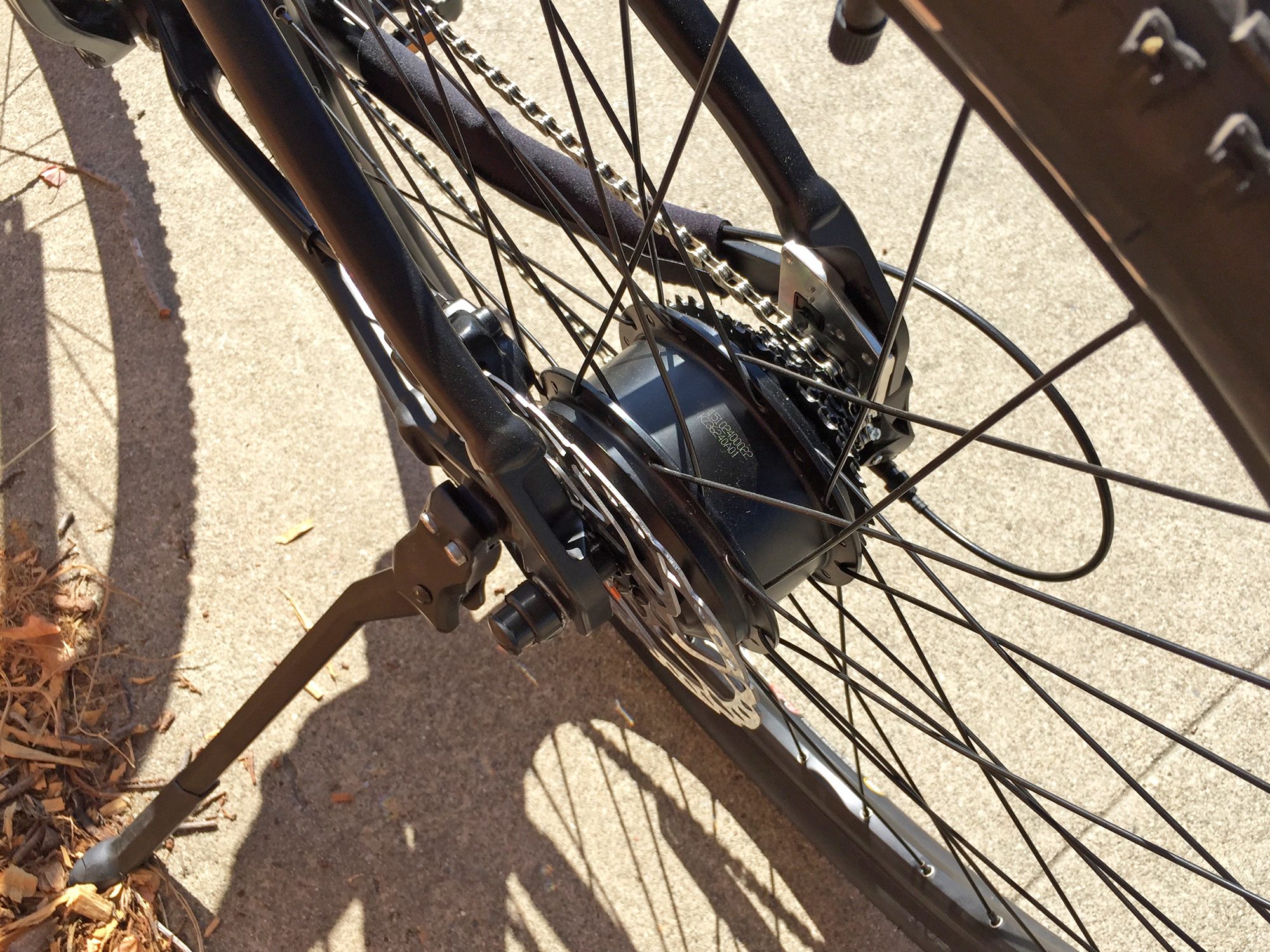
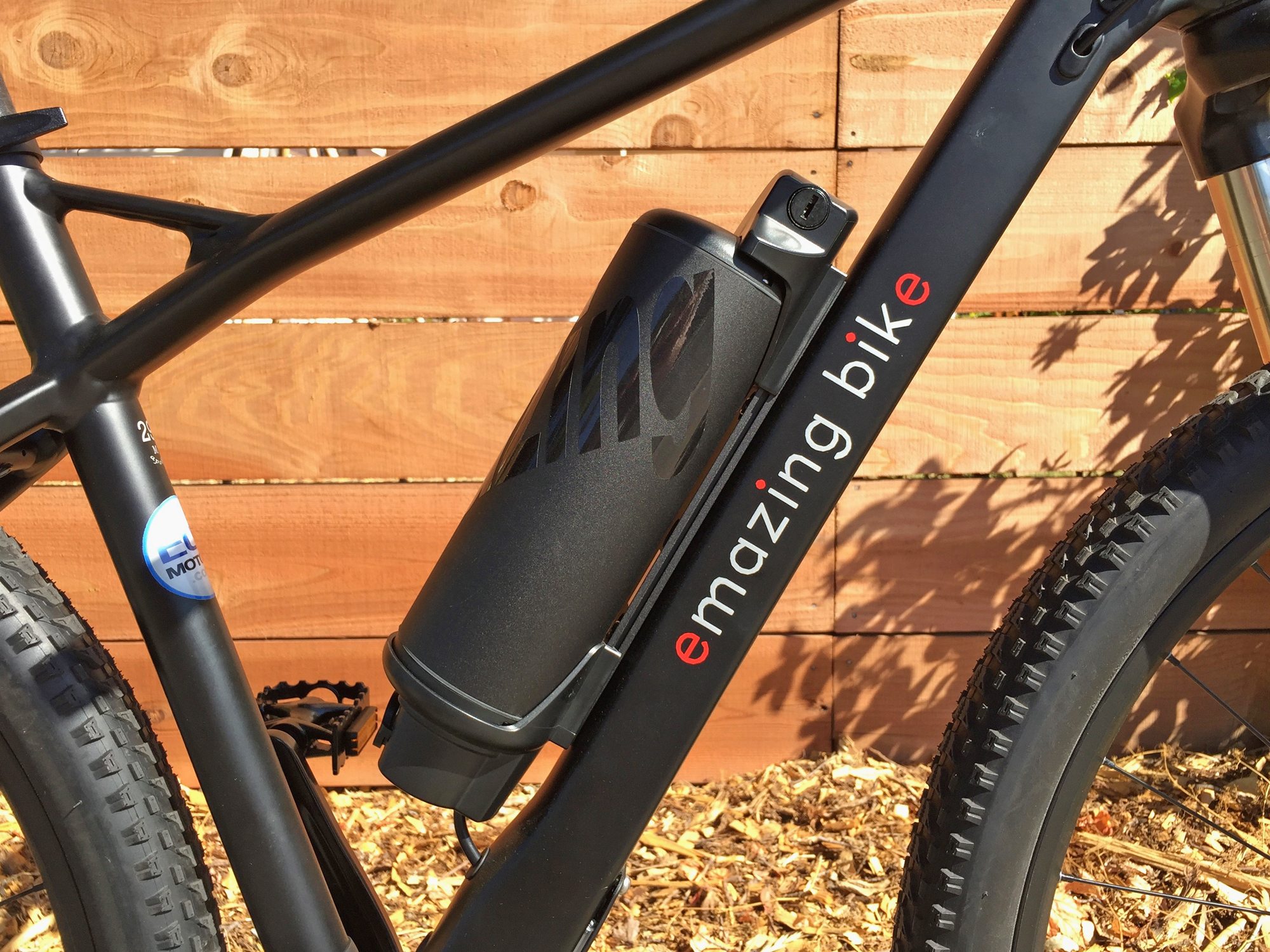
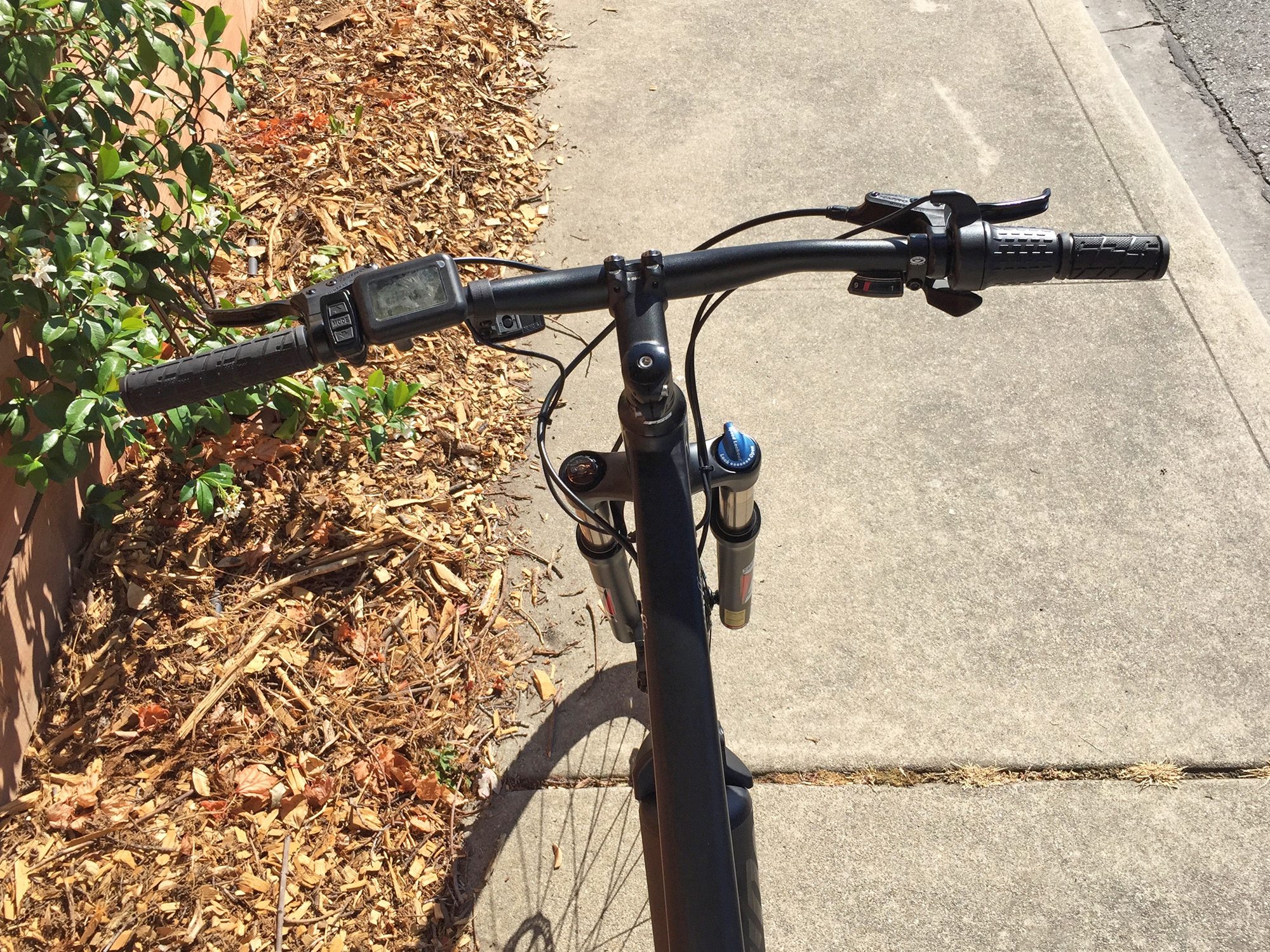
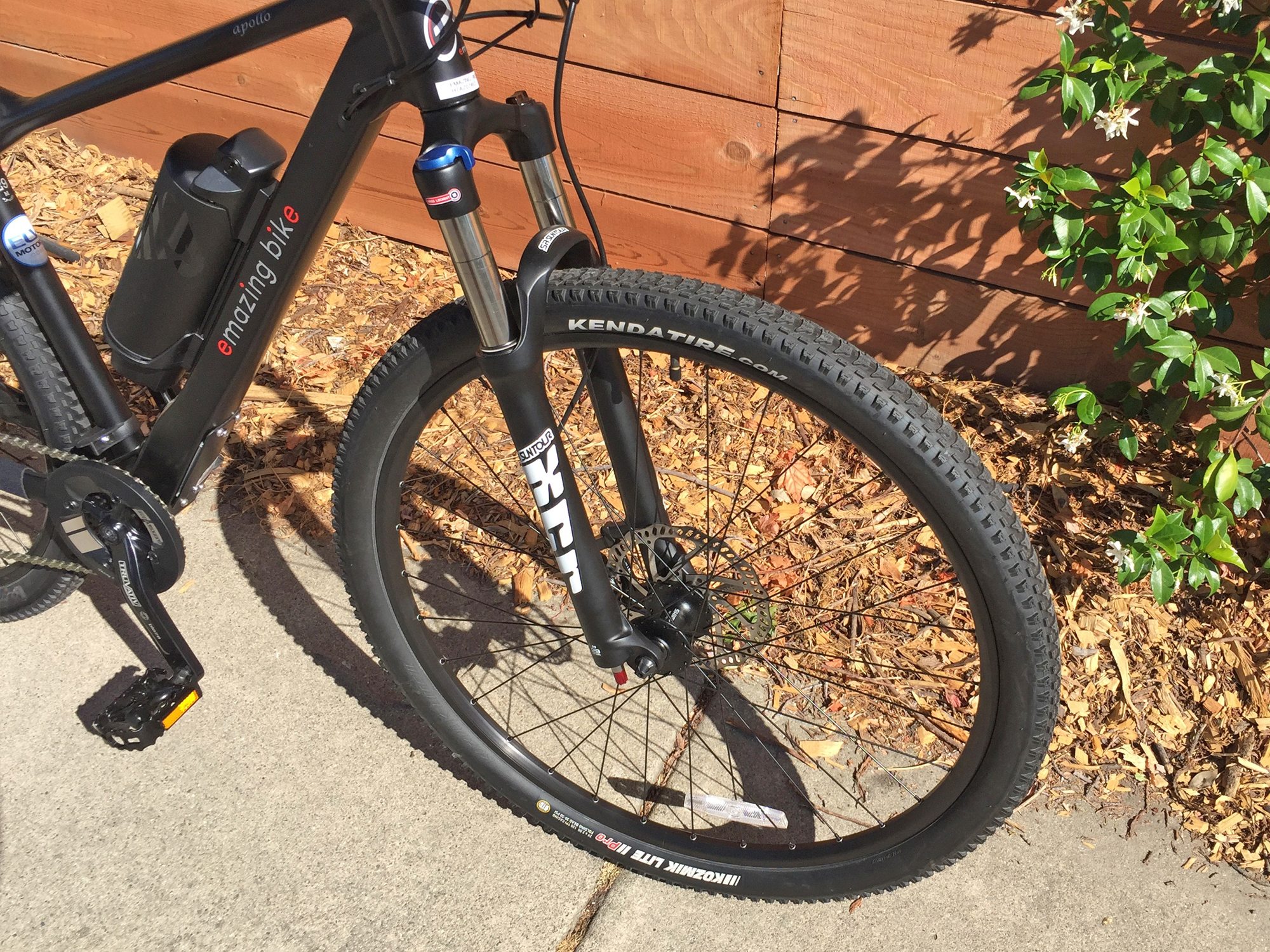


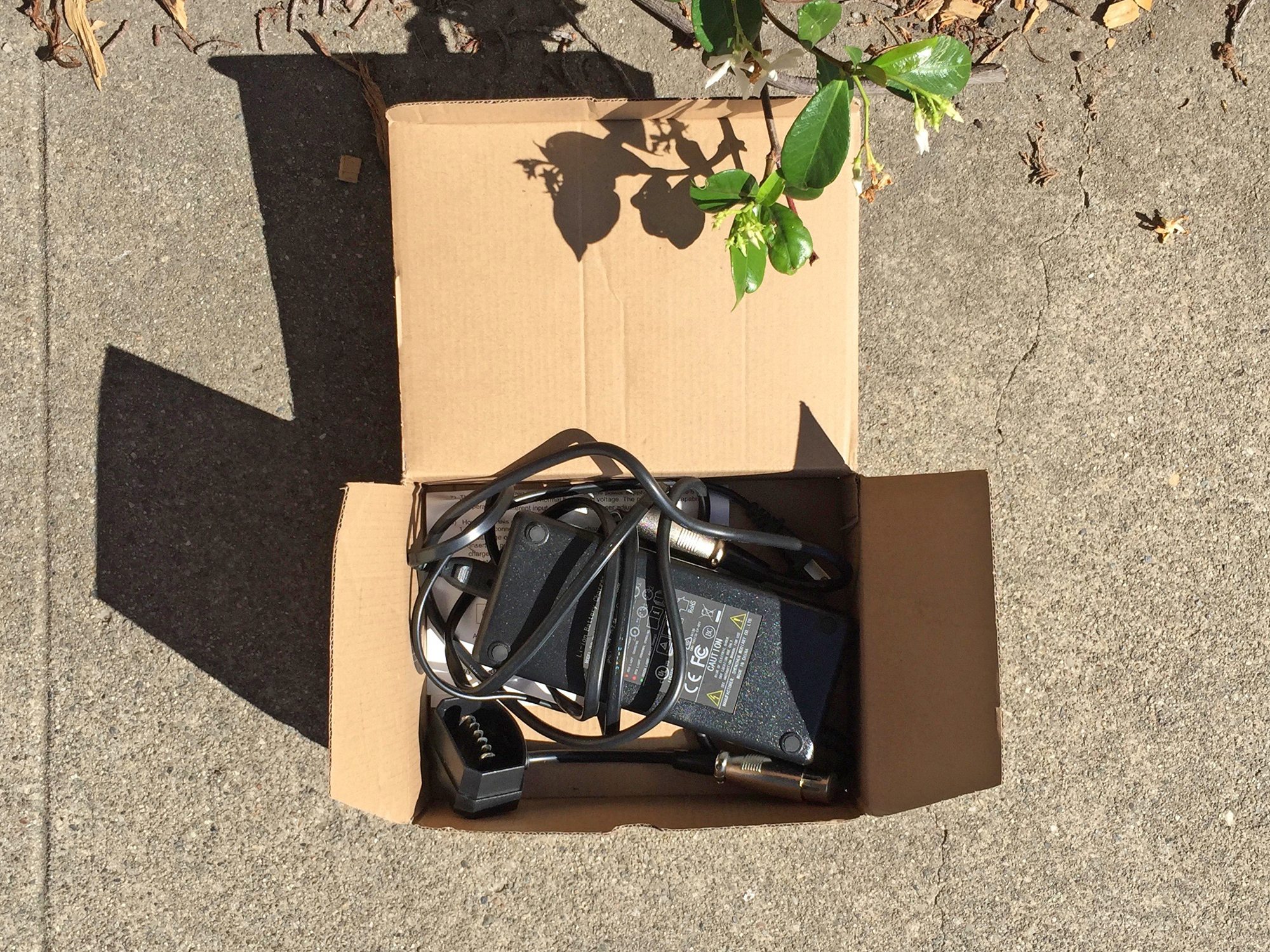

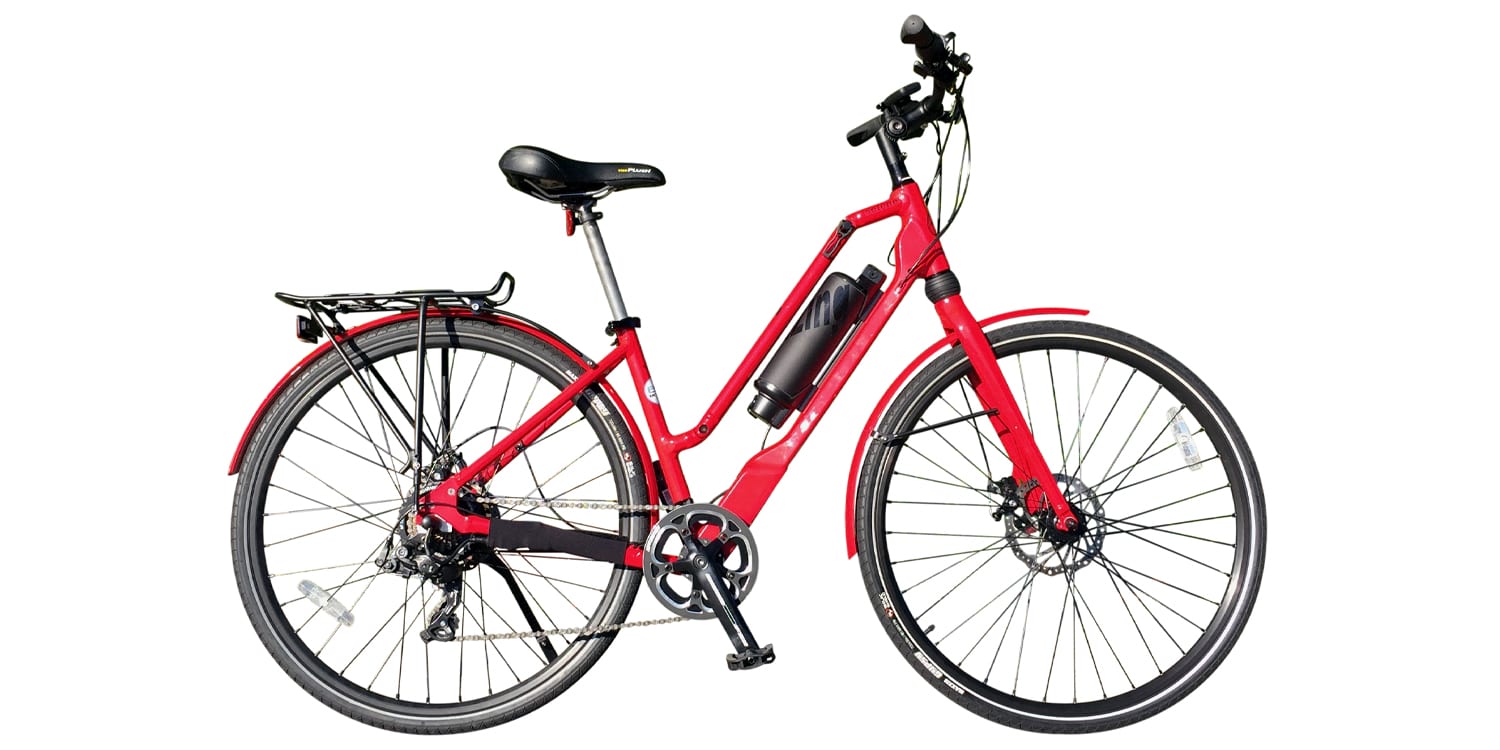

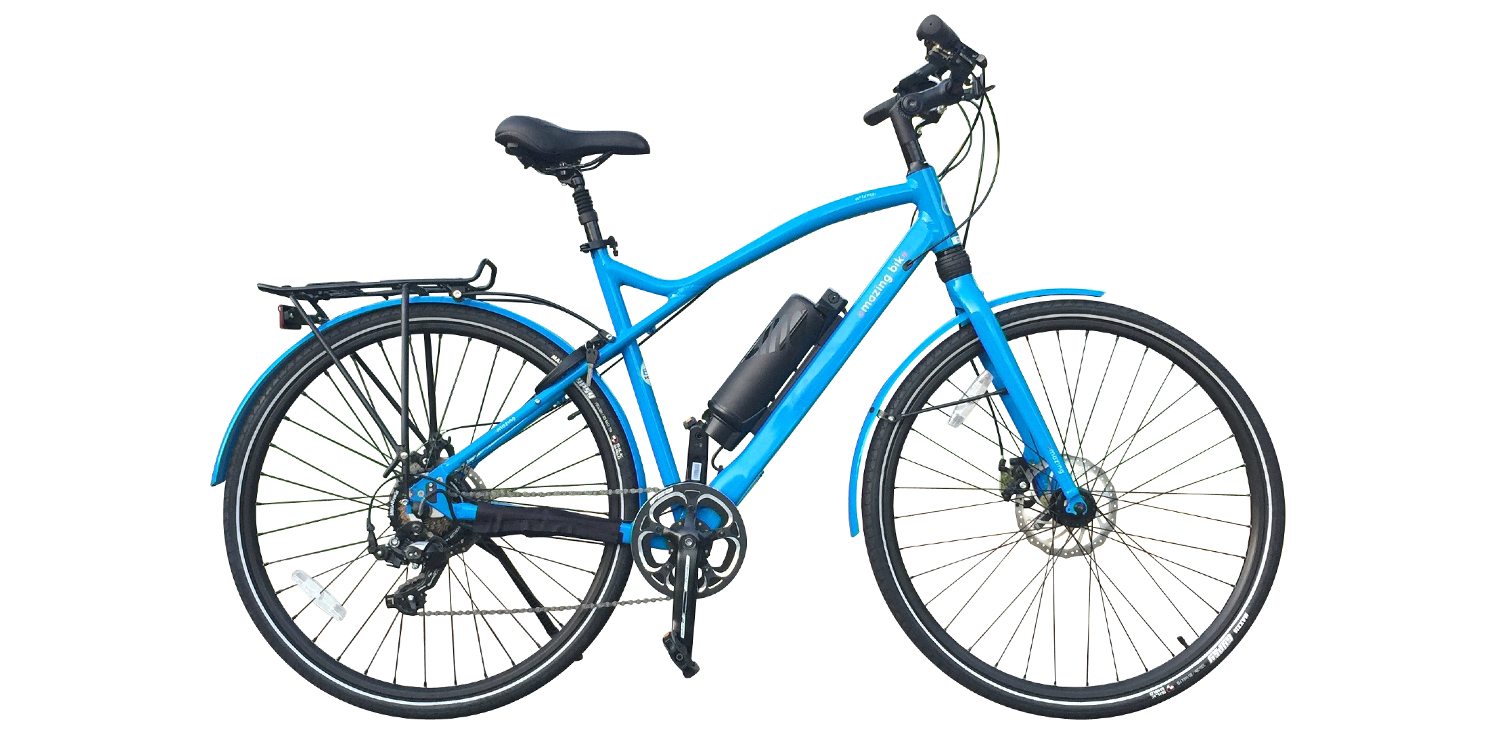
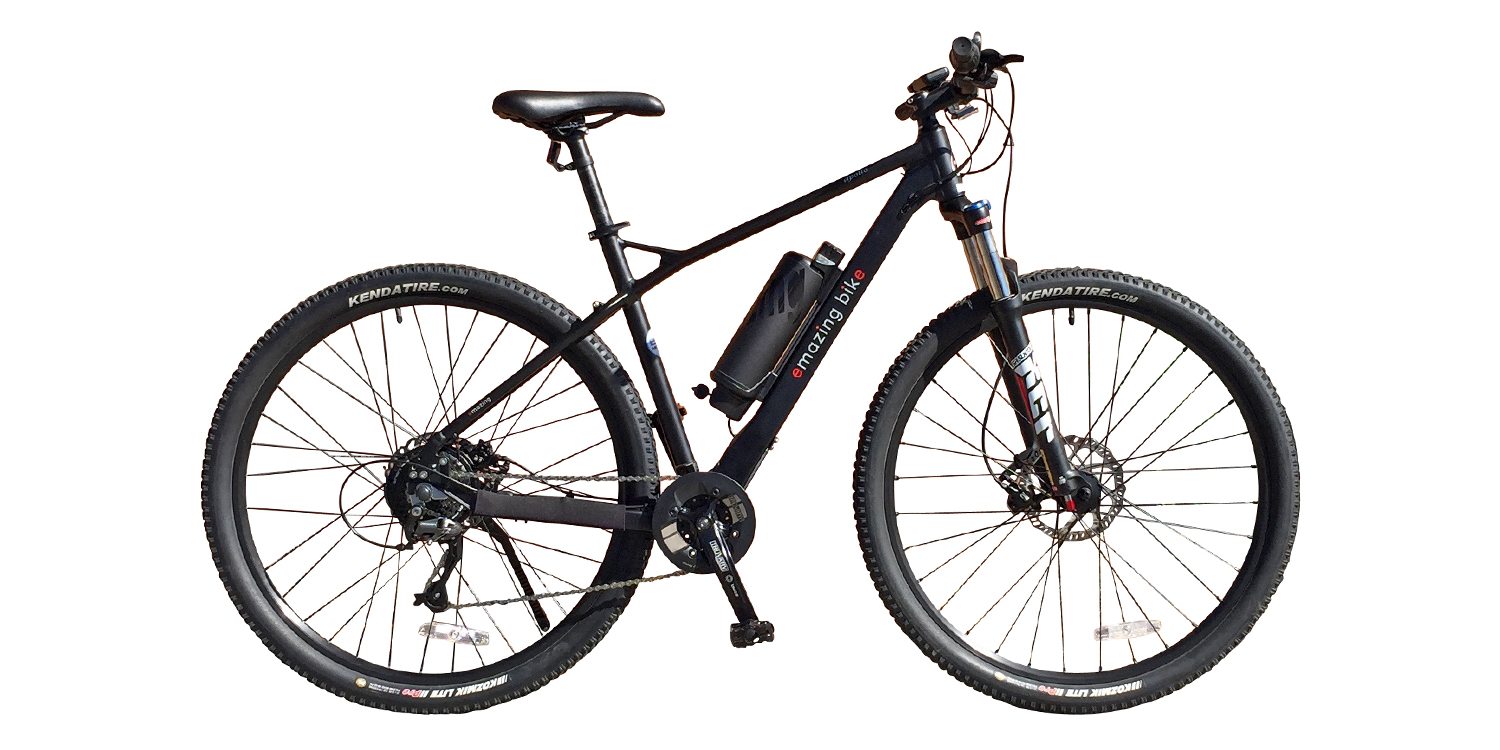
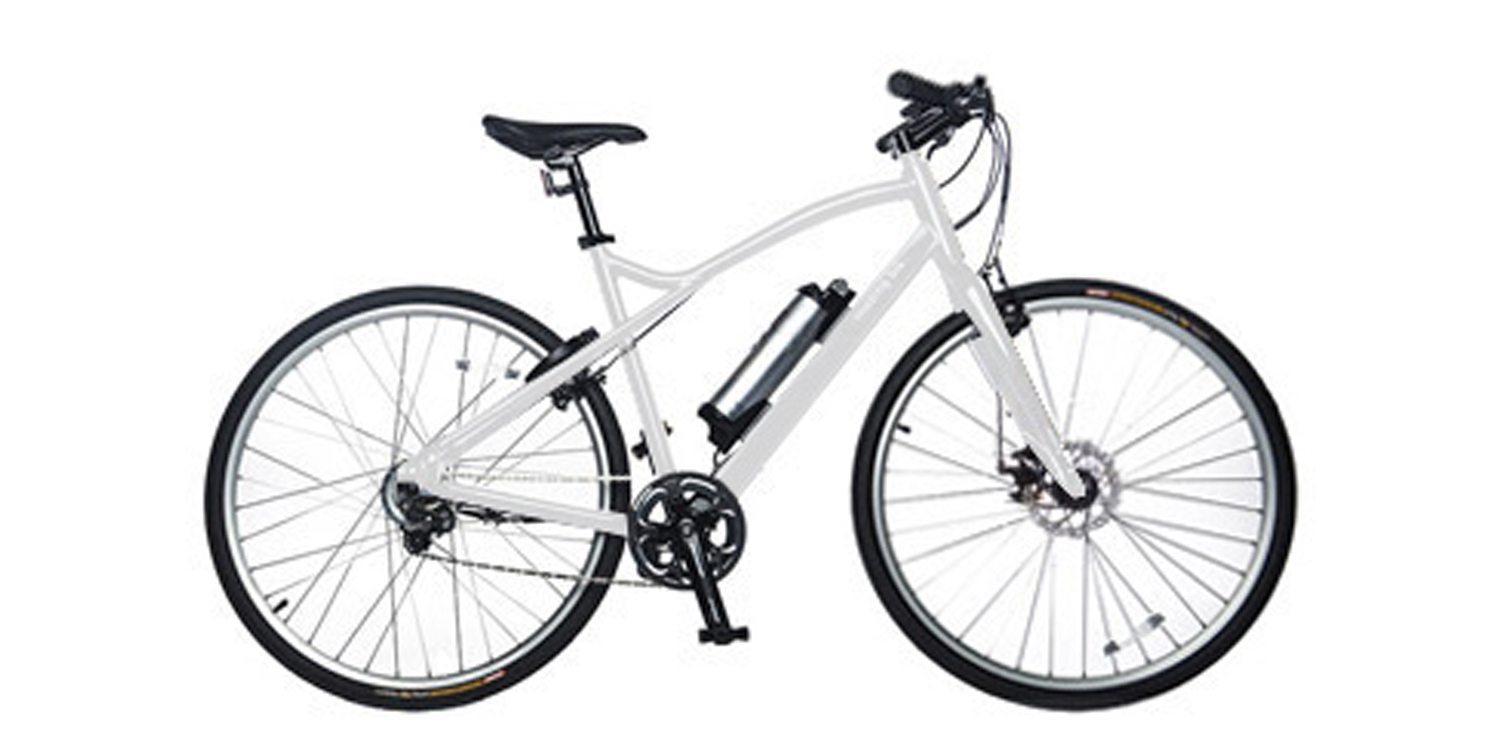
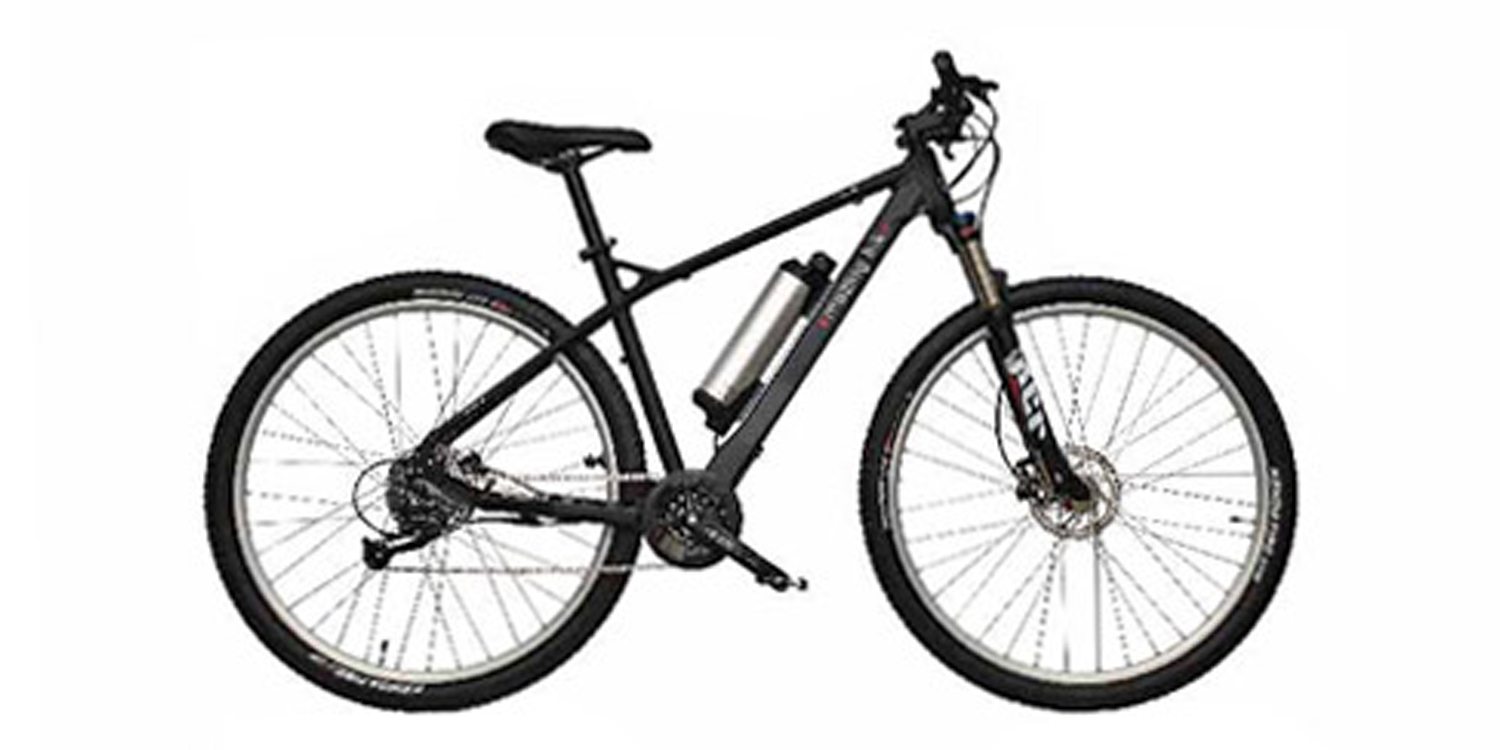
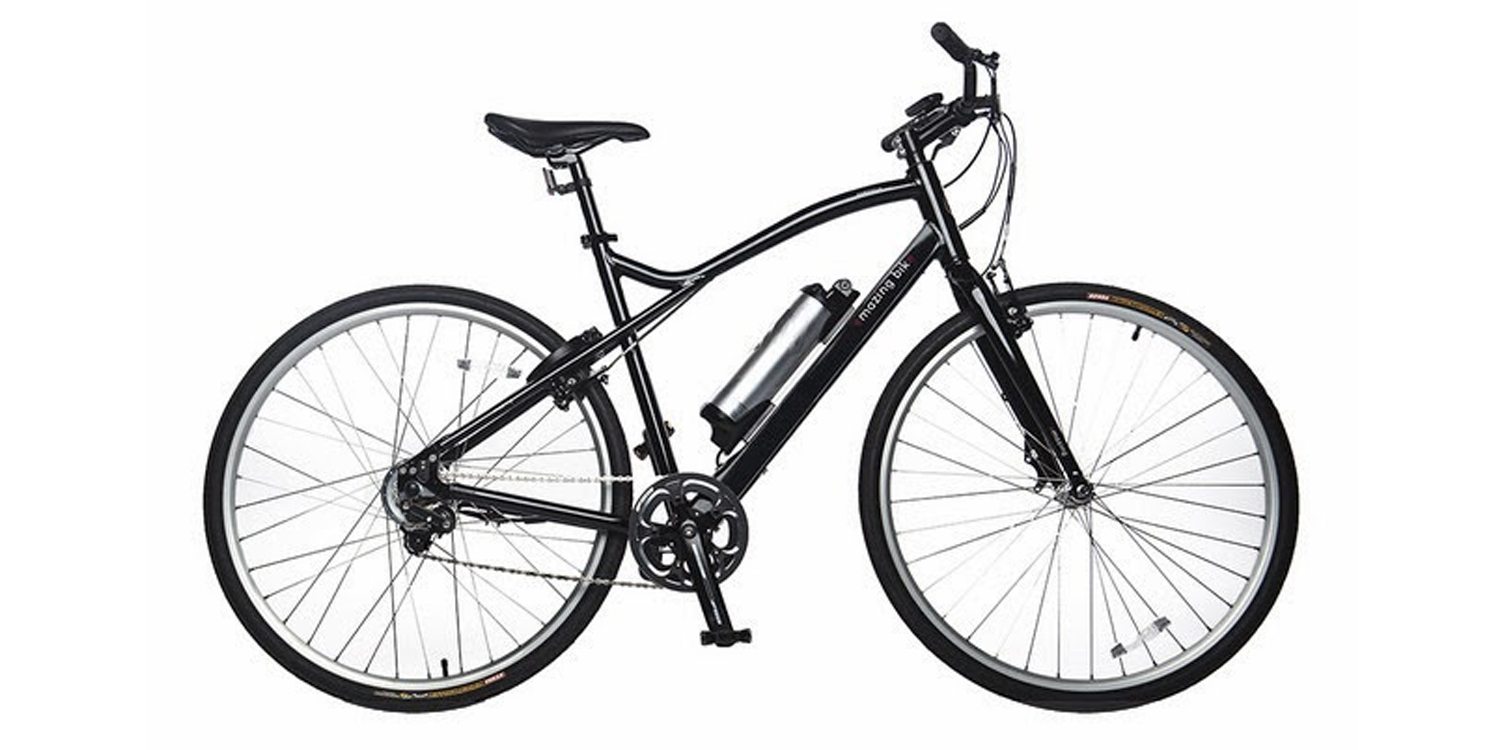
Reader Interactions